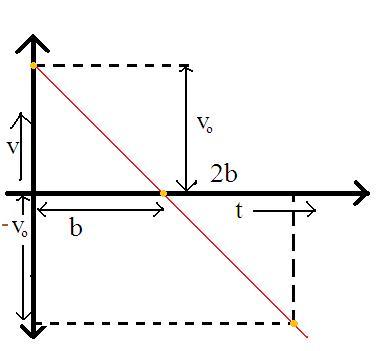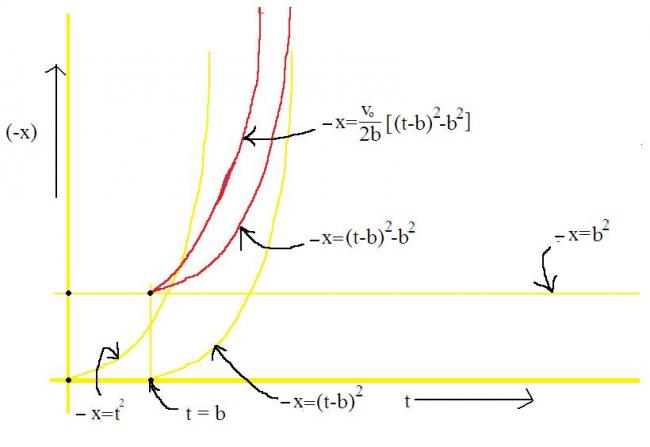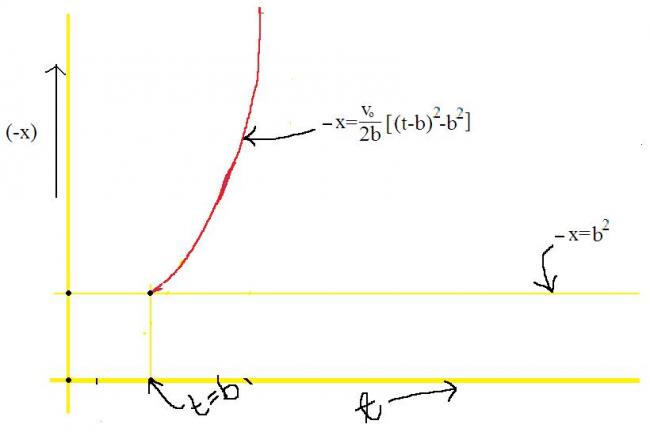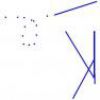 49
49v = vo(b-tb).
at t=0, v=vo.
at t=b, v=0
and a= - vob
graph::

x=vot + 12at2= vot - 12.vobt2.
x= - vo2b{t2-2bt}= - vo2b{t2-2bt+b2-b2}= - vo2b{(t-b)2-b2}
graph::


 49
49i have taken positive y direction as negative x direction as i had realised after completing the whole diagram that i had missed out one (-) sign of the equation..
if we consider the positive y direction as positive x direction then, we will have to take the mirror image of this graph about the time axis (i.e. x-axis)
[1][1][1]
 1
1yaar subho sorry u didi not get the question clearly![itna simple hota toh main nahin bhejta na yaar........[3][3][3]]
read this line again!!!!!!
plot vx(t)[x-component of velocity v/s t grpah is needed not v v/s t) and displacement x(t) curve!
v= v0[1-t/b] is a formula for velocity in three dimensions[i mean v and v0 are 3-D vectors...]
REGARDING POST NO> 2:
see what u have done u haVE plotted V-t graph....i wanted x-component of v v/s t graph.....
and u know wat the real trouble is???how are we supposed to get x-component of v from given formula???only after thth comes the turn of x-t graph dude...
 1
1bhaiyoon aur behno koi to solve karo is sum ko!!!!!!!!!!!!!!!!
 1
1let V0= v1 i +v2 j+v3k
then V=V0(1-t/b)
so V=( v1 i +v2 j+v3k)(1-t/b)
taking only x component
Vx= v1(1-t/b)
now there is no way we can express v1 in terms of V0 from the given data
so assume v1 to be known n plot the graph


